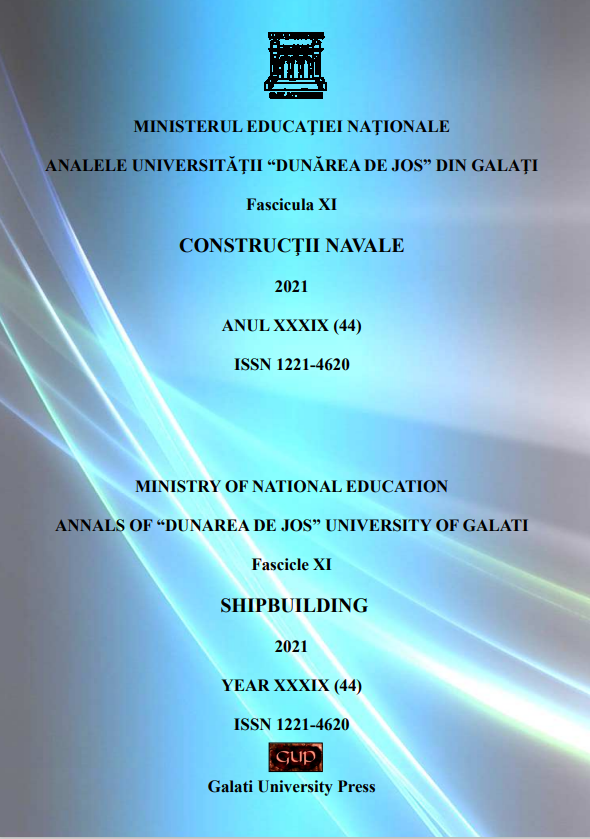Shapes’ optimisation using numerical naval hydrodynamics of a Ro-Ro double ferry with electric propulsion to cross the Danube
Abstract
One of the crucial problems of the 21st century is pollution. Regarding a low carbon footprint, thorough research efforts are being made to minimise fuel gas emissions. Ships, through the powers established for propulsion and the fossil fuels used, are some of the most toxic human inventions. Scientist in many European countries and beyond are developing studies either to reduce emissions from propulsion engines or to design body shapes of ships with low forward resistance and to find electric propulsion solutions. This paper carries out studies of naval hydrodynamics to find body shapes that generate the lowest resistance to advance. Thus, using hydrodynamic observations and with the help of the NUMECA calculation program, two different hulls are studied in order to establish the optimal shape with the lowest forward resistance. Furthermore, acknowledging the limited aquarium of the inland waters, an important aspect to approach is the size of the waves as well as their length. In order not to cause damage to existing shores and facilities, the waves produced by the floating body must have minimum heights and wavelengths.
Downloads
References
[2]. Lungu, A., “Unsteady Numerical Simulation of the Behavior of a Ship Moving in Head Sea”, Paper OMAE2019-95239, ASME. International Conference on Offshore Mechanics and Arctic Engineering, Volume 2: CFD and FSI, 2019.
[3]. Obreja, C.D., Nabergoj, R., Crudu, L., Domnisoru, L., “Seakeeping Performance of a Mediterranean Fishing Veseel”, IMAM Conference (International Maritime Association of the Mediterranean), Lisboa, Portugal, ISBN 978-0-8153-7993-5, pp. 483-491, 2017.
[4]. Obreja, C.D., Nabergoj, R., Crudu, L., Pacuraru, S., “Identification of Hydrodynamic Coefficients for Manoeuvring Simulation Model of a Fishing Vessel”, Ocean Engineering, Vol. 37, Iss. 8-9, ISSN 0029-8018, pp. 678-687, 2010.




